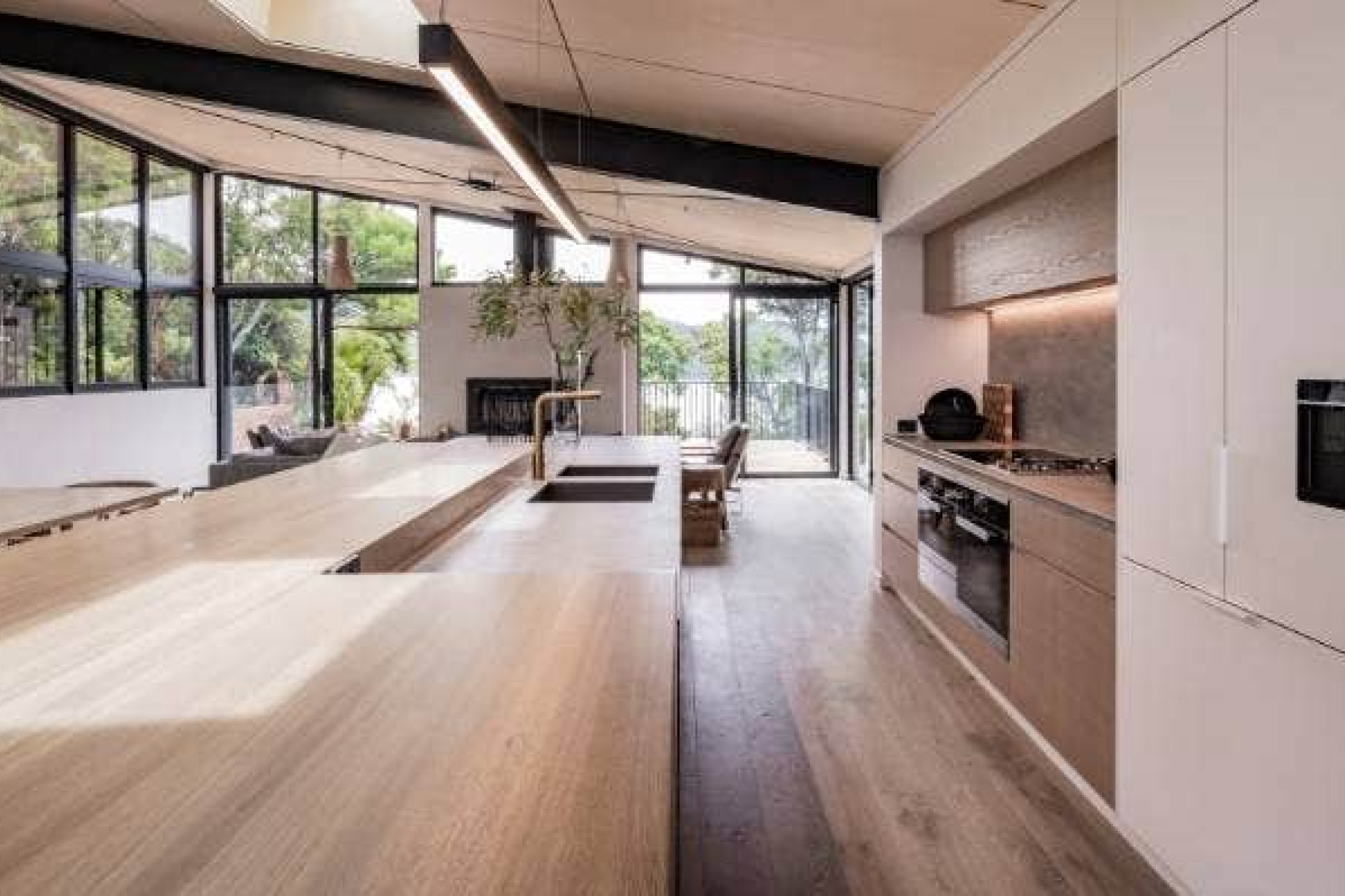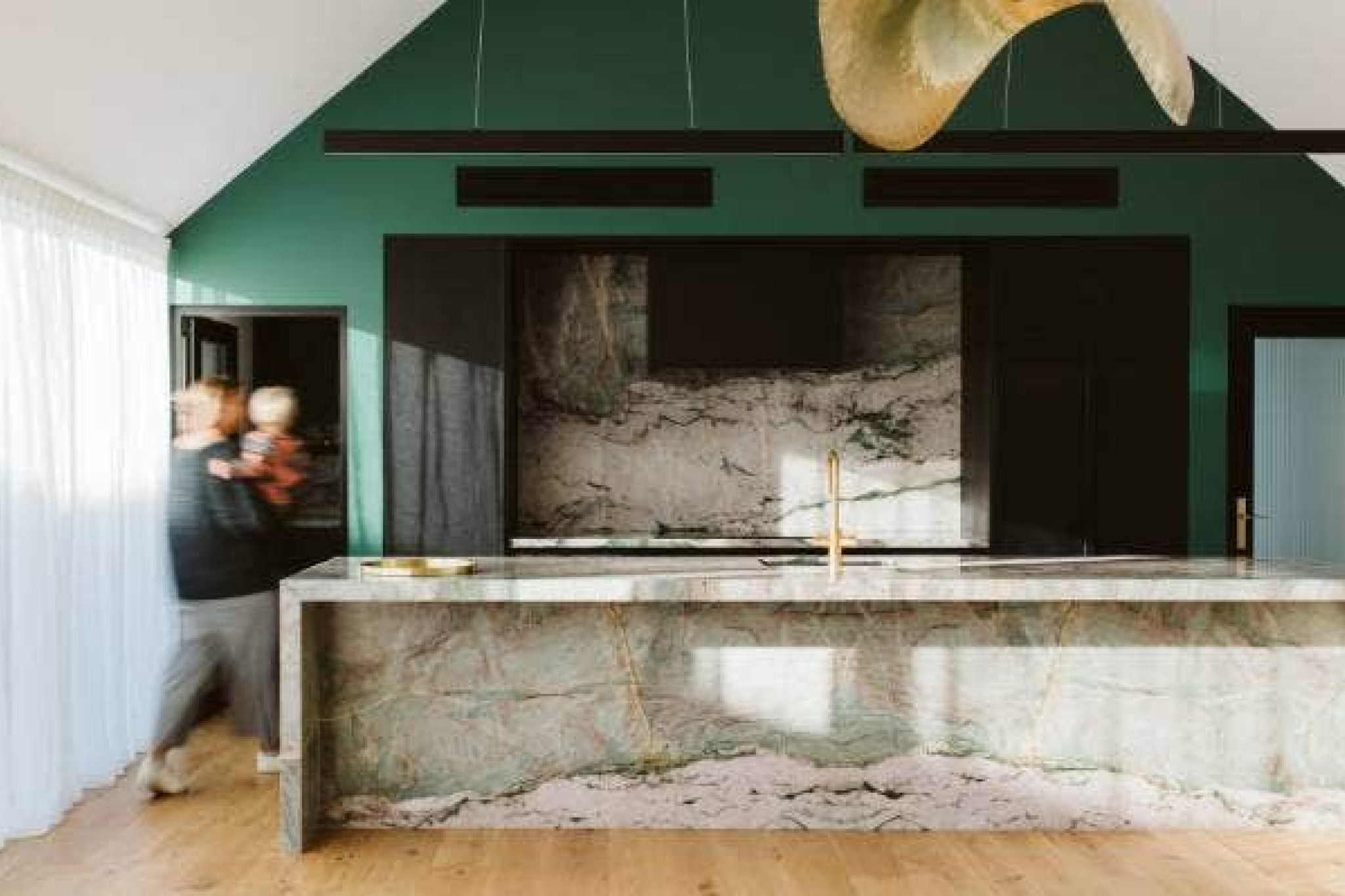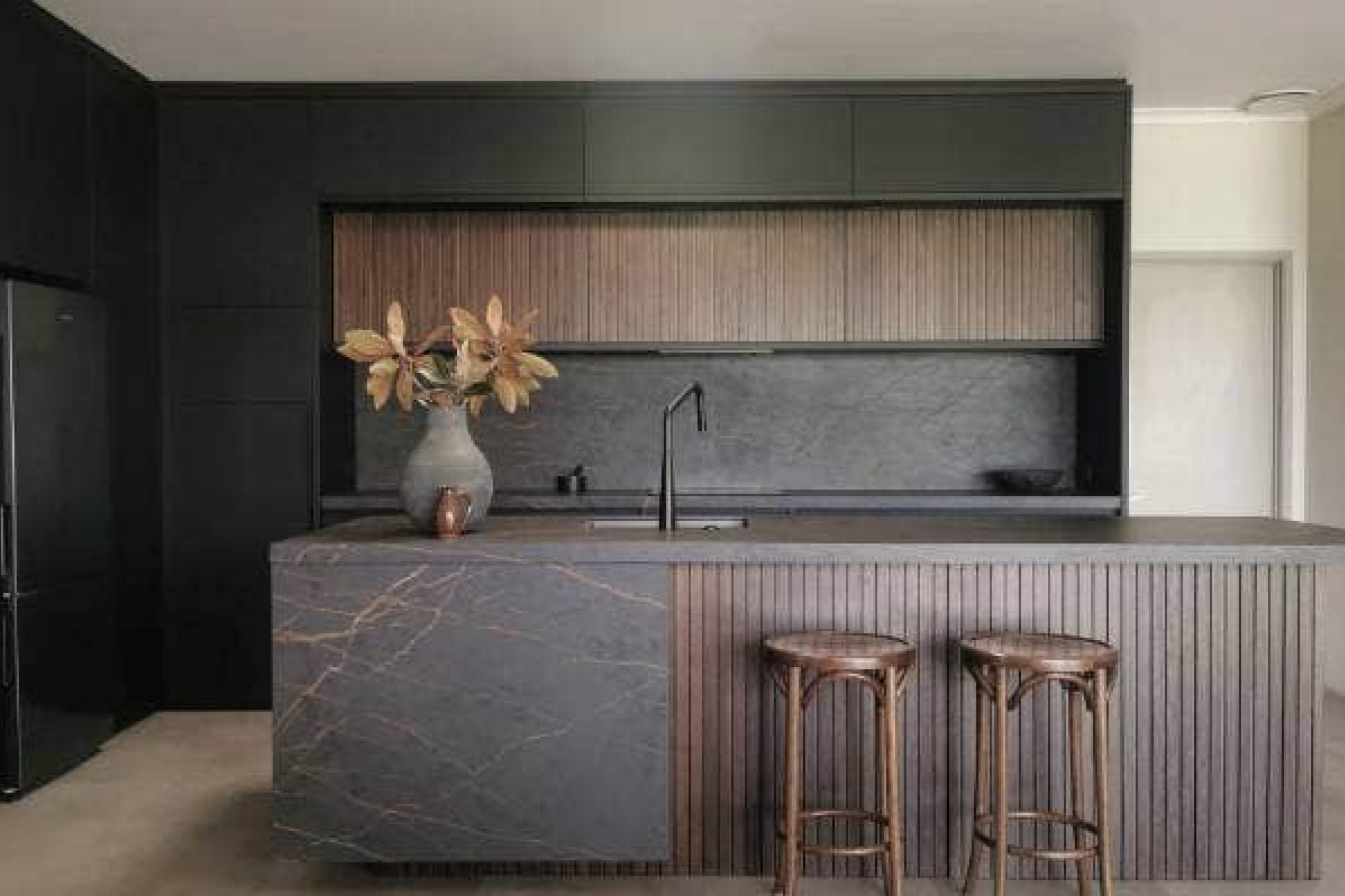Hit enter to search or ESC to close
Expert Advice - What's hot for kitchen in 2023? Natural warmth beats clinical white!
Kitchens have taken on an even greater significance post-lockdown. Not that they’ve ever been out of the limelight when it comes to home renovations, but homeowners are prepared to put a little more effort into creating a kitchen that will not only go the distance, but also make them feel good.
That’s the word from leading designers who say people are leading such busy lives in a time of turmoil, they need a space that’s a respite. As multi award-winning Christchurch designer Davinia Sutton puts it: “After years of Covid and lockdowns, home is now more of an investment in living, and quality of life. People are wanting spaces that are calming, rejuvenating and restorative, and we are seeing that come through in the demand for more natural palettes and materials.”
Damian Hannah of German Kitchens in Wellington, who is a judge in this year’s NKBA Kitchen of the Year Awards, is also finding people don’t want clinical spaces.
“Forget glossy, sharp, minimalist looks for 2023,” he says. “This year it’s all about warmth, texture and curves. Honed, leathered granite, for example, is replacing glossy white, which is a look you don’t really find in nature. Organic elements are huge – its all about bringing Mother Nature back into the house.”

Natalie Du Bois in Auckland, who won all three major awards for kitchens, bathrooms and design in the 2022 NKBA awards, agrees: “Curved and organic shapes are very strong. “Nothing is too sterile or minimalist. People are wanting nostalgic ‘old-world’ elements that borrow from the designs of yesteryear, mixing curves and colours from the ‘50s with more classic, traditional styles.
“There’s also a growing need to bring the outdoors in – we are seeing a lot more greenery, and skylights bring in natural light.”
Designers also say homeowners are far more aware of using sustainably sourced materials, and this is a determining factor in the choice of products – there is a strong demand for New Zealand-made products. Similarly, building a kitchen that won’t need replacing in a few years is a vital factor.

Timber, stone, porcelain and concrete rule
Engineered veneers still reign. And natural stone, porcelain and concrete are all key looks for benchtops and island fronts, but the look and finish are never “busy”. Sutton is frequently specifying bespoke porcelain benchtops with integrated sinks. “It’s a very seamless, monolithic look that makes a strong statement.”
The NKBA says a survey showed that 48% of their designers predict porcelain will be the benchtop material of choice, followed by 33% suggesting it will be engineered stone, which is often favoured for kitchens under $50,000.

The seamless look is also influencing splashback materials. Decorative tile patterns, are falling out of favour, says Hannah. “Mosaic tiles create a very busy aesthetic, that’s all a bit overwhelming. Today, we usually morph the benchtop material up the wall for the splashback, so it’s seamless and calmer. It means, instead of having four key elements in your kitchen [cabinets, benchtops, splashback, flooring], you have three, which simplifies everything.
“When we are judging kitchens for the awards, we do find a lot of kitchens can be over-designed,” Hannah says. “There can be too much texture, too many angles, just too much going on.”
Sutton agrees: “It’s best to select one piece that’s going to be the hero. Not everything needs to have all the bells and whistles.”
White and black on the out
There’s a calming influence evident in cabinetry, also – it’s the result of the move toward darker colours. “When you have white cabinetry, there are clear vertical and horizontal shadowlines between the components,” Hannah says. “Darker cabinets eliminate those, so again, you have a calmer aesthetic.”
Sutton is noticing a demand for handcrafted elements, such as beautiful wooden dovetailed drawers in cabinetry. And coloured carcasses that provide a splash of colour when you open a cupboard door are welcome.
We can also expect to see more tactile finishes this year, from matt and velvety textures to natural plaster finishes, notably on walls – this will be a big theme, Sutton says. “It gives a luxe feel to a room.”

And Du Bois says we will see timber not just on floors, but on walls and ceilings as well. She also says black is giving way to less intense dark colours, such as anthracite greys.
“Colour changes are really big this year,” Hannah says: “White is definitely on the way out, and that applies to white cabinetry, tiles and marble. Materials now are much ‘warmer’, with natural colours taking over.”
It seems black is also dropping off in popularity. The NKBA surveyed its members about colour and only 1.8% suggested black was on-trend for this year. It has been replaced by timber, grey, all shades of green, sand, desert, blue and beige. But one designer doesn’t believe we will ever see the end of white completely.
Cork flooring is back
Remember cork flooring in the seventies? It’s back, in a huge way. But, Hannah says it’s not the orange cork as we knew it before. “It is dyed and stained, and it comes in planks that look like timber flooring. I am frequently specifying cork in African Ivory, which has a beautiful cream burl. Cork has the advantage of being warm underfoot, so you don’t need underfloor heating. It’s 100% waterproof, and it rebounds, so it’s much kinder to feet and knees.”
The “mixing” of materials is another big move. Sutton says metals are also being mixed to great effect. And mirrored tinted glass is now being used for cabinetry door profiles, not splashbacks. “We will often use two different door handle styles. It’s a twist on the furniture approach to cabinetry design.

“It’s also apparent in the desire to keep chaos behind the scenes,” Sutton says. “There’s an increasing trend for kitchens to be more of a separate room, not completely open-plan, which allows the living spaces to be ‘calmer’ and clutter-free.”
And it’s fair to say many of us have many more small appliances that need benchtop space – from the coffee machine, kitchen whizz and breadmaker to the Thermomix and air fryer.
Island as a piece of art
But the demand for working sculleries has not lessened the visual impact of the kitchen. A lot of emphasis is being placed on the look of the island, and we can expect to see this amplified in 2023.
”We are seeing more sculptural elements introduced to the kitchen,” Sutton says. “Design plays on proportions and architecture, and islands are now seen as a good piece of art. People are prepared to push the boundaries, and we are seeing a lot of curves and facetted forms.”

Battens currently feature prominently on island fronts, but the NKBA says this will gradually give way to affordably textured timber Melamine.
Lighting has become a lot more sophisticated in recent years. Designers are providing different options for lighting over islands, rather than three pendants set equidistant above the benchtop. There are often multiple layers of lighting for dramatic effect, with people able to create different moods.
Look out too for spotlights – they are right back in vogue, taking over from downlights.
And LED lighting strips are de rigeur in the kitchen – they often feature beneath islands enhancing the sense the island is floating. Invariably, they are also used beneath overhead cabinets and within shelving, so all items are well illuminated.

Sutton is noticing a demand for multiple cooking zones in kitchens, along with Bluetooth connectivity. “It’s all about perfecting the art of cooking,” she says. “And it’s also about convenience. Fridges can let you know what foods are getting low; you can turn on your washing machine from afar; and your rangehood can be connected to automatically turn on when the hob is on. Everything has been captured.”
There’s a growing increase in pop-up power points for the island benchtop. And many homeowners are requesting phone charging stations built into benchtops. Other items often seen on benchtops today include pop-up extractors and troughs for herbs.
What will it cost?
The sky’s the limit when it comes to kitchen design and manufacture. Sutton says most of her company’s work tends to sit in the higher end of the price range. “Generally, people are spending more than $100,000 for a timeless, curated, bespoke kitchen with appliances, which can be $20,000 to $30,000.
“It’s very tricky to do a kitchen for under $50,000, just because of the manufacturing costs and appliances. And we’re at the bottom of the world. We have all the freight charges of getting materials here.”
According to NKBA members, 31% of kitchens designed in 2022 cost $40,000-$60,000, 24% said $30,000-$40,000 and 7% cost over $80,000.
